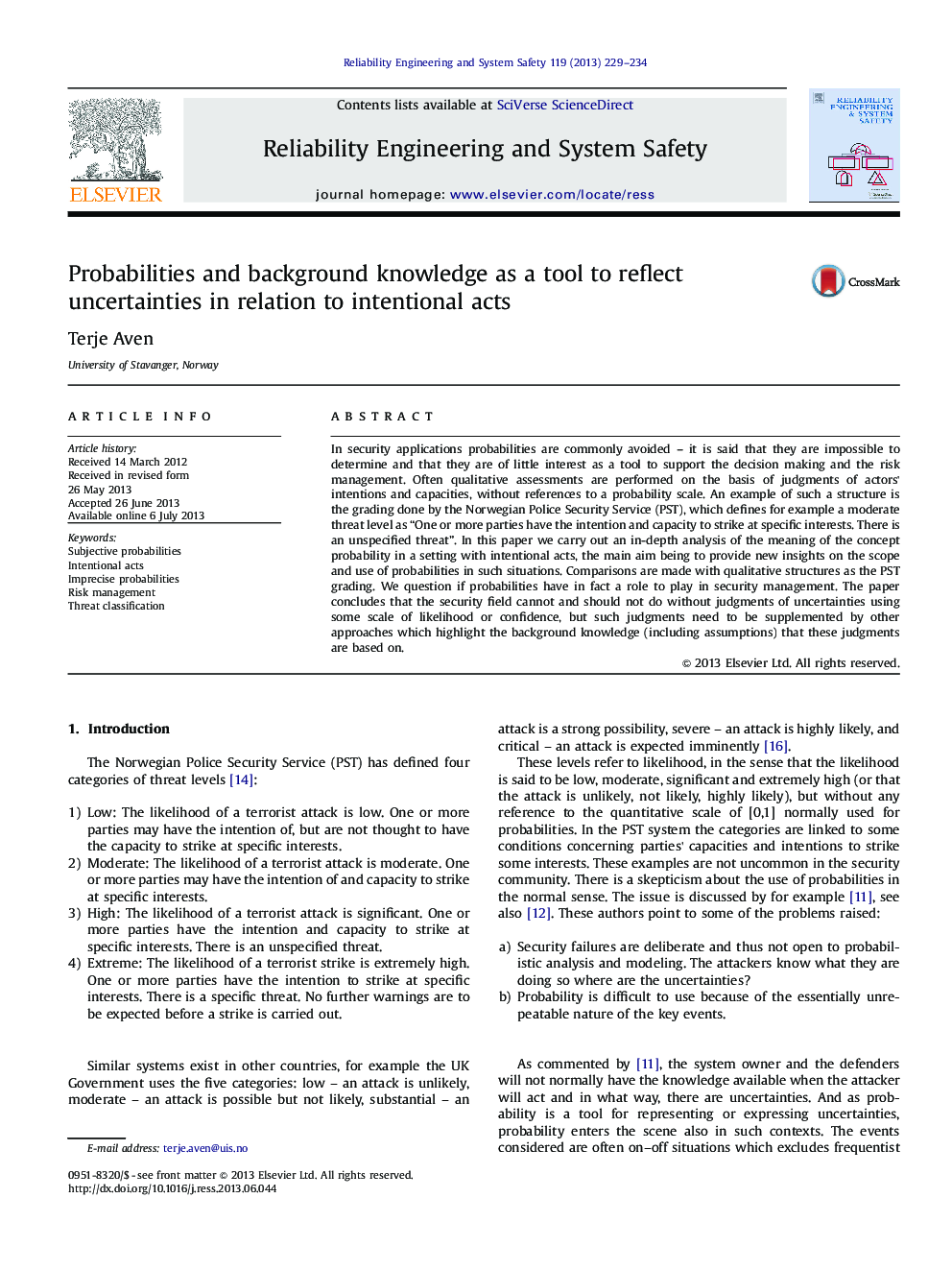| Article ID | Journal | Published Year | Pages | File Type |
|---|---|---|---|---|
| 805662 | Reliability Engineering & System Safety | 2013 | 6 Pages |
In security applications probabilities are commonly avoided – it is said that they are impossible to determine and that they are of little interest as a tool to support the decision making and the risk management. Often qualitative assessments are performed on the basis of judgments of actors' intentions and capacities, without references to a probability scale. An example of such a structure is the grading done by the Norwegian Police Security Service (PST), which defines for example a moderate threat level as “One or more parties have the intention and capacity to strike at specific interests. There is an unspecified threat”. In this paper we carry out an in-depth analysis of the meaning of the concept probability in a setting with intentional acts, the main aim being to provide new insights on the scope and use of probabilities in such situations. Comparisons are made with qualitative structures as the PST grading. We question if probabilities have in fact a role to play in security management. The paper concludes that the security field cannot and should not do without judgments of uncertainties using some scale of likelihood or confidence, but such judgments need to be supplemented by other approaches which highlight the background knowledge (including assumptions) that these judgments are based on.
